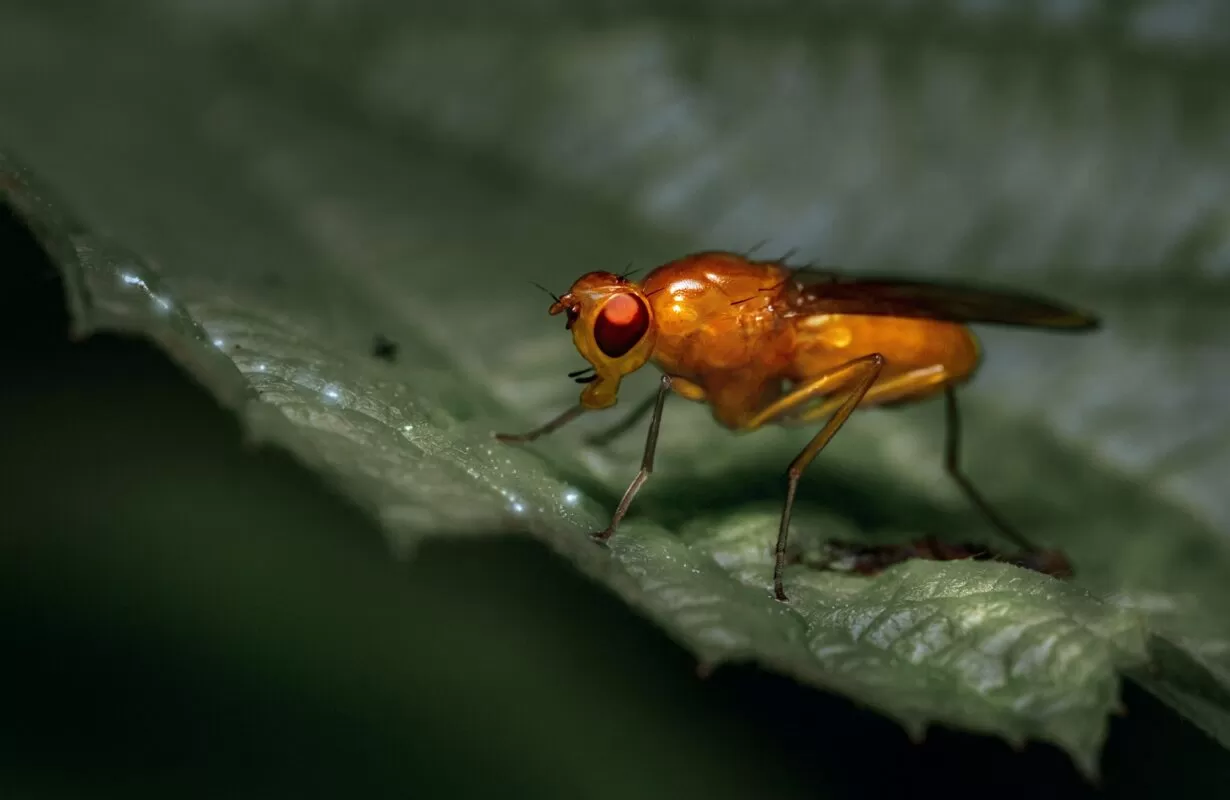Fruit Fly Facts
The Science Behind Fruit Fly Attraction: What Really Lures Them In?
Understanding Fruit Flies
Before we can understand what attracts fruit flies, it’s essential to know a little about their biology and habits. Fruit flies, or Drosophila melanogaster, are small insects that are typically 3 to 4 millimeters long. They are attracted to ripe or decaying fruit, vegetables, and other organic matter. Fruit flies have an incredibly fast reproductive cycle, which makes them a challenge to control once they’ve infested your home.
Key Takeaways:
- Fruit flies are drawn to ripe, fermenting, or decaying organic matter, which provides essential nutrients for their rapid reproduction.
- Their strong sense of smell, with receptors capable of detecting food odors from miles away, is the primary tool for locating food sources.
- Chemotaxis, the movement towards chemical stimuli, guides fruit flies to their food, while visual cues like light also play a role in navigation.
- To prevent fruit fly attraction, it’s important to dispose of ripe produce, clean spills quickly, maintain sanitation, and control moisture and humidity in the home.
- Implementing measures like sealing food containers, fixing leaks, and using window screens can help keep homes less appealing to fruit flies.
Factors That Attract Fruit Flies
Several factors contribute to fruit fly attraction. Some of the most significant factors include:
- Food Sources: Fruit flies are drawn to ripe, fermenting, or decaying fruits and vegetables, as well as other organic matter. This food source provides them with the nutrients and energy they need to reproduce.
- Odors: Fruit flies have an excellent sense of smell and can detect the odors produced by fermentation and decay from a considerable distance. These odors act as a beacon, guiding the flies to a potential food source.
- Moisture: Fruit flies require moisture to breed and lay their eggs. Damp or wet environments, such as those found in kitchens and bathrooms, are highly attractive to these pests.
- Temperature: Fruit flies thrive in warm environments. Homes that maintain a consistent temperature above 70°F (21°C) are particularly susceptible to fruit fly infestations.
The Science of Attraction: How Fruit Flies Find Their Way
Fruit flies use a combination of chemical cues and sensory receptors to locate suitable food sources and breeding sites. Let’s explore the science behind these processes:
- Olfactory Receptors: Fruit flies have specialized olfactory receptors on their antennae, which allow them to detect volatile compounds released by fermenting or decaying organic matter. These receptors can pick up on odors from as far as 7 miles (11 kilometers) away.
- Chemotaxis: Once a fruit fly has detected a potential food source, it uses a process called chemotaxis to move towards the source. Chemotaxis is the movement of an organism in response to a chemical stimulus, and in the case of fruit flies, it’s driven by the attractive odors emitted by their preferred food sources.
- Visual Cues: Although fruit flies rely primarily on their sense of smell to locate food, they also use visual cues to navigate their environment. Fruit flies are attracted to light and may use it to guide their movement towards potential food sources.
Sometimes fruit flies appear out of nowhere. If you would like to learn more read our article on Where Do Fruit Flies Come From?
Preventing Fruit Fly Attraction
Understanding fruit fly attraction enables us to make our homes less appealing to these pests. Some prevention methods include:
- Regularly disposing of or refrigerating ripe fruit and vegetables.
- Promptly cleaning up spills and organic debris.
- Maintaining proper sanitation in kitchen and bathroom areas.
- Storing food in sealed containers, including compost bins.
- Eliminating excess moisture sources, such as leaky pipes or standing water.
- Ensuring proper ventilation to reduce humidity in damp areas.
- Installing screens on windows and doors to prevent fruit flies from entering your home.
Conclusion
By delving into the science behind fruit fly attraction, we can better understand how these tiny pests invade our homes and how effectively a fruit fly trap can mitigate this issue. Implementing the prevention methods mentioned above not only reduces the likelihood of fruit fly infestations but also contributes to a healthier and more comfortable living environment. With proactive measures, including the strategic use of fruit fly traps, and an understanding of what attracts fruit flies, maintaining a pest-free home becomes a more manageable task.

Hi there! I’m Beliz Güner, and welcome to my world of innovative solutions for fruit fly challenges. Though I hail from Turkey and have a background in interior design, my true passion lies in tackling the persistent issue of fruit flies. My journey has been anything but ordinary, as I’ve transitioned from creating beautiful spaces to devising effective fruit fly traps.
My interest in DIY home projects and product reviews has fueled my desire to share knowledge and personal experiences with others facing similar frustrations. Through my blog, I aim to empower you with the tools and insights needed to combat fruit fly invasions, drawing on my unique blend of design creativity and hands-on experimentation. Join me as we explore the most effective strategies to reclaim our homes from these unwelcome guests.

